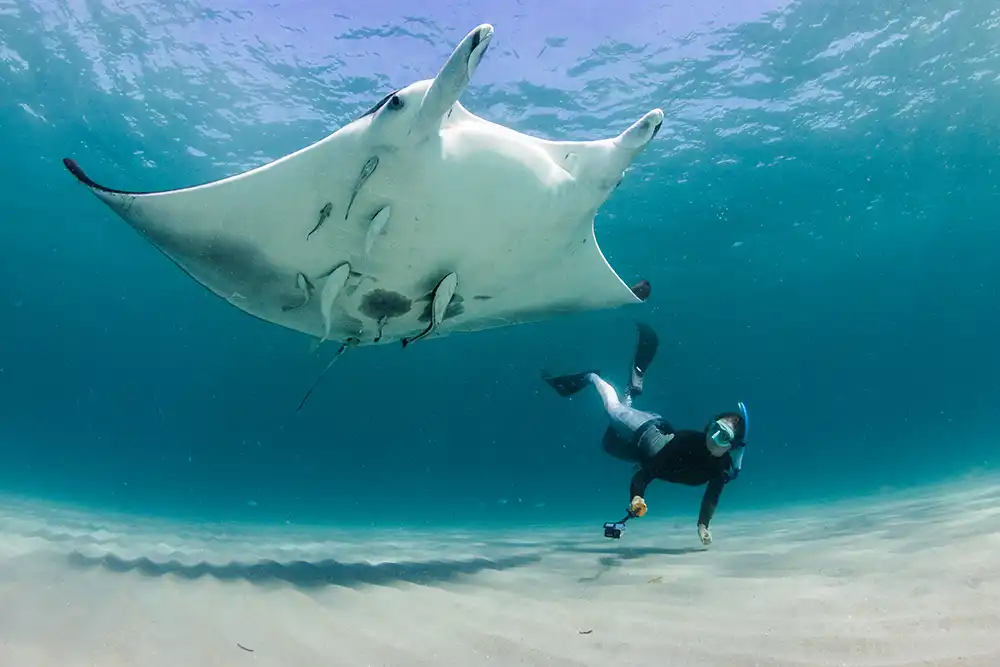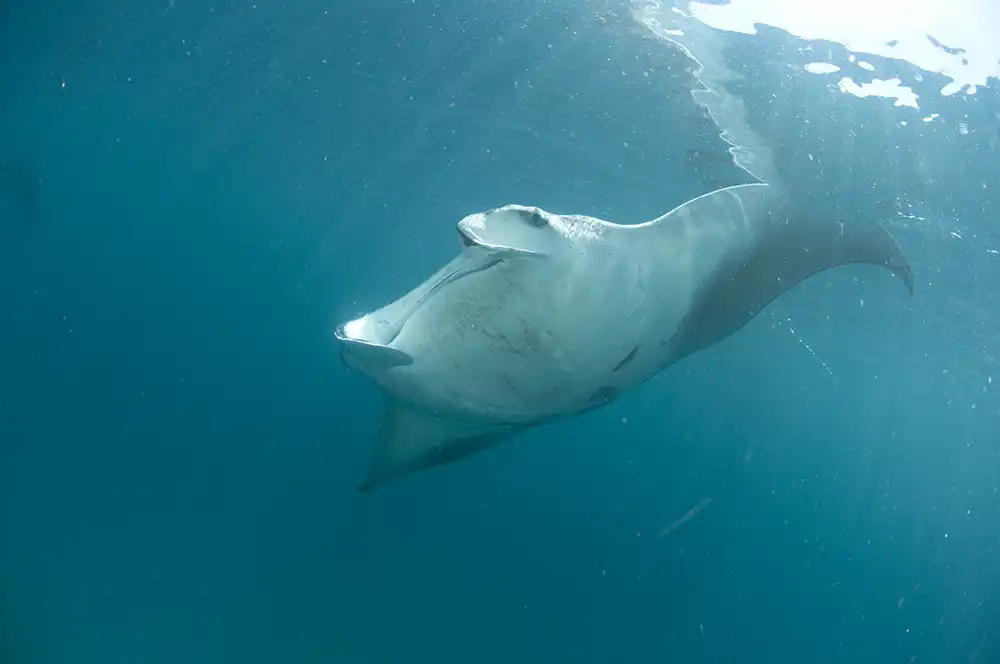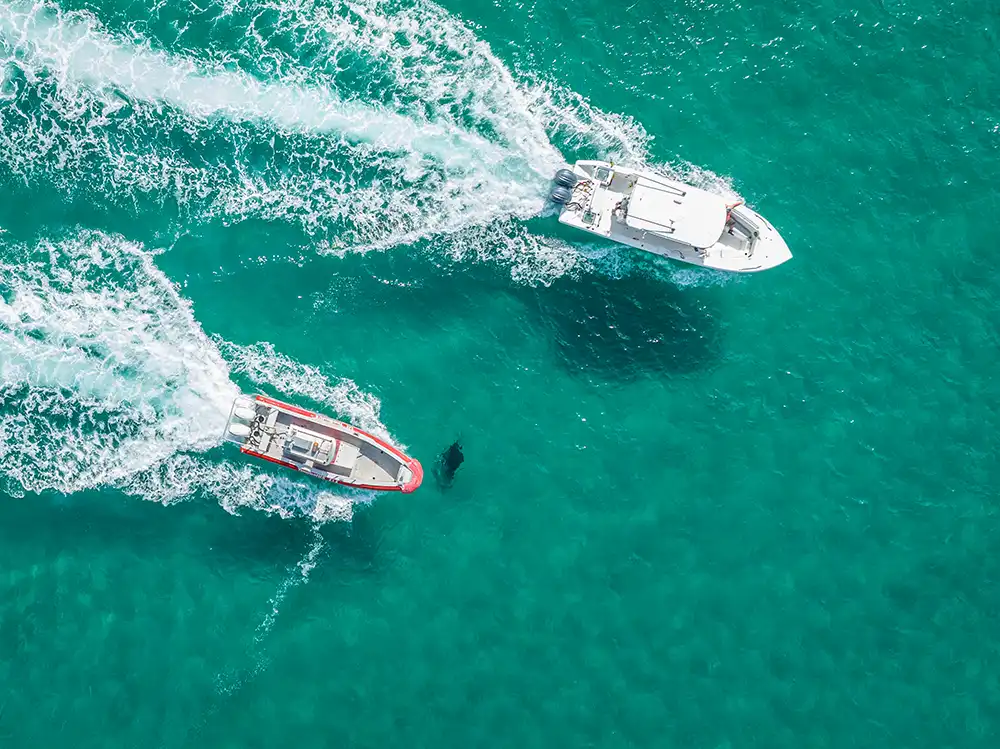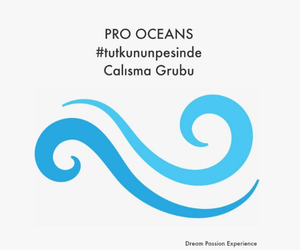The third manta ray species, Mobula yarae has been formally described by scientists, 15 years after its existence was predicted by renowned manta ray expert Dr Andrea Marshall
Scientists from the Marine Megafauna Foundation (MMF) say they are celebrating the formal announcement of the discovery of a third species of manta ray, Mobula yarae, found exclusively in Atlantic Ocean waters.
Published in Environmental Biology of Fishes, the new description represents the culmination of a 15-year scientific journey that began with observations by MMF co-founder Dr Andrea Marshall in 2009.
Marshall’s study revolutionised manta ray science by formally separating manta rays into two distinct species – the giant oceanic manta, mobula birostris (formerly manta birostris; the species were reclassified in 2017), and the smaller reef manta, mobula alfredi.
In that same landmark paper, Marshall predicted that a third manta ray species existed in the Atlantic Ocean. Although she was confident of her prediction based on years of studying their morphology, proving the link required genetic confirmation.

Writing in 2022, Marshall said that she had recognised the difference between Atlantic mantas and other populations immediately, but said that at the time, it would be challenging to convince others
‘It had been pretty shocking to everyone [in 2009] that there were two species of manta ray and suddenly I had to argue that there were three,’ she said.
‘To be honest, I was not sure if anyone would believe me. But there was never a doubt in my mind.
‘That confidence came from the fact that it had taken me six years to differentiate the first two species and I knew them inside out at this stage.
‘This manta didn’t look like either of them.’

The Atlantic mantas, found in tropical and subtropical waters from the eastern United States to Brazil, including the Gulf of Mexico and Caribbean Sea, were designated Mobula cf birostris (where cf denotes uncertainty over the classification) while research continued.
With formal classification now complete, the new Atlantic manta ray species has been named Mobula yarae after Yara, a water spirit from Indigenous Brazilian mythology.
Dr Marshall had been working with international collaborators to publish a formal description of the new species when she suffered a severe brain aneurysm and stroke in early 2024.
While she remains on long-term medical leave, M. yarae’s formal description was completed by an international research team led by Brazilian scientist Nayara Bucair from the University of São Paulo, with MMF’s Jessica Pate carrying forward the collaboration and providing Andrea’s data and observations.
‘This discovery confirms what Andrea has long been working on,’ said Dr Simon Pierce, MMF Executive Director and co-founder.
‘Andrea’s 2009 taxonomic work on manta species flagged the likely existence of a third Atlantic manta species based on careful field observations, and this formal description brings that work to completion.’
What are the differences between the three manta species?

Mobula yarae shares many characteristics with both existing manta species, but displays a mix of traits from both of them.
From above, the black dorsal coloration and pectoral fin shape look like a giant oceanic manta, but on the ventral (underside) surface, the lighter colour and spot patterns resemble a reef manta
The key distinguishing features between Atlantic manta rays and its cousins are:
- Shoulder patches: M. yarae has distinctive V-shaped white shoulder patches, unlike the T-shaped patches in M. birostris
- Face colouration: Lighter coloration around the mouth and eyes compared to the darker faces of giant mantas
- Ventral markings: Dark spots typically confined to the abdominal region, not extending between the gills as in reef mantas
- Size: Can grow 5-6 meters like giant mantas, though many observed individuals are smaller juveniles, and often found in coastal waters like reef mantas
Although the Atlantic mantas display markedly different colourations, these are not, by themselves, enough to mark them as a separate species.
‘It’s a classic case where genetic analysis was needed to confirm what careful morphological observation suggested,’ explained Pate.
‘The differences are consistent once you know what to look for, but they’re subtle enough that definitive identification requires expertise.’
New manta species under threat

Unlike their wide-ranging relatives in the Indo-Pacific, Mobula yarae appears to have a more restricted distribution in the western Atlantic Ocean, from the eastern United States through the Gulf of Mexico and Caribbean Sea to coastal Brazil.
The Atlantic manta ray species has been documented in both oceanic islands and archipelagos as well as coastal and estuarine regions.
This coastal preference potentially makes the Atlantic manta rays more vulnerable to human impacts than their oceanic relatives, and they are known to be regularly caught as bycatch
MMF’s Florida manta ray research has documented boat strikes and fishing line entanglement as significant threats in Florida waters, and in the Gulf of Mexico, shrimp trawling is likely a major source of mortality for the new species.

‘The formal recognition of Mobula yarae is crucial for manta ray conservation efforts,’ says Pate. ‘You can’t protect what you haven’t formally identified.
‘Now that we’ve proven that this Atlantic manta ray is distinct, we can tailor our research and conservation initiatives to protect the species.’
MMF says that its scientists will continue studying M. yarae populations throughout much of their range, with Jessica Pate now leading Florida’s manta ray research and working with international partners to better understand the species and its conservation.
Current Atlantic manta ray research includes satellite tagging studies in Florida waters and ongoing population monitoring at key sites in Mexico.
‘This formal recognition is just the beginning,’ said Pate. ‘In Florida, we’re seeing these manta rays in areas with heavy boat traffic and coastal development.
‘Understanding their habitat needs and movement patterns is crucial for their protection.’
The complete paper, ‘An integrative taxonomy investigation unravels a cryptic species of Mobula Rafnesque, 1810 (Mobulidae, Myliobatiformes), from the Atlantic Ocean’ (2025), by N Bucair, S Hinojosa-Alvarez, A D Marshall, J Pate, et al is published in Environmental Biology of Fishes.
Find our more from Marine Megafauna Foundation at marinemegafauna.org, or visit the team on Instagram @marinemegafauna, Facebook @MarineMegafauna and LinkedIn @marine-megafauna-foundation
The post It’s official – there are three species of manta ray! appeared first on DIVE Magazine.





